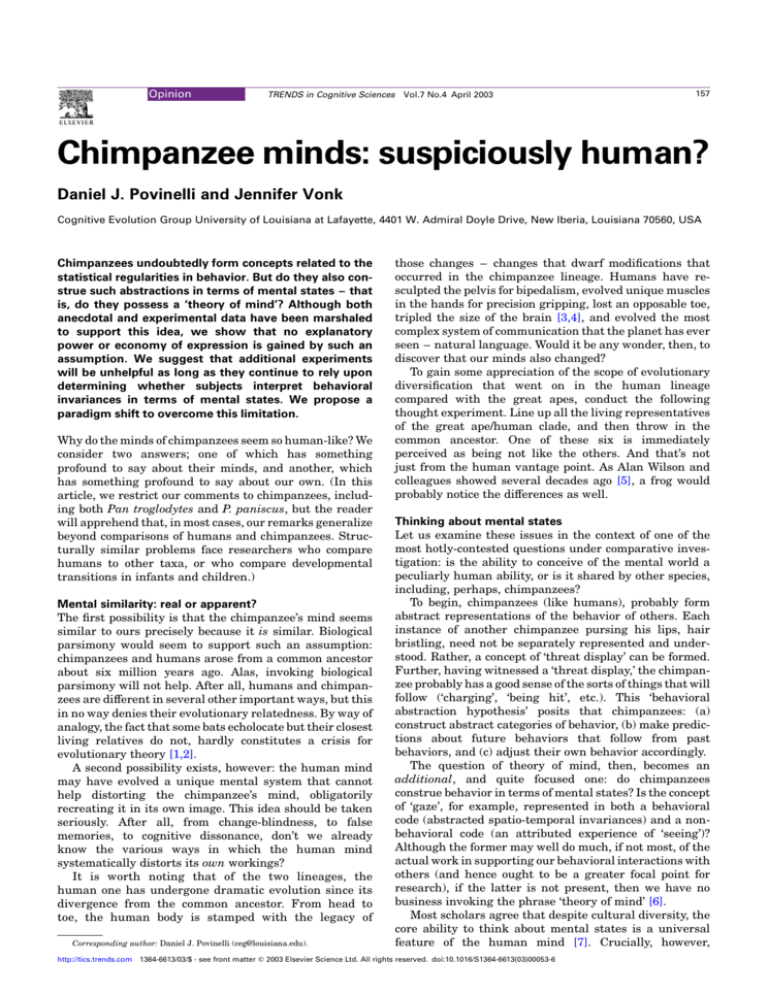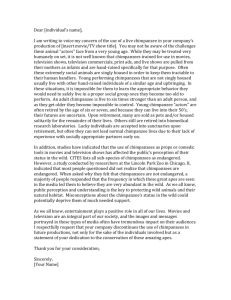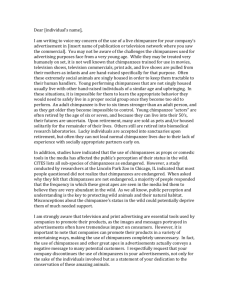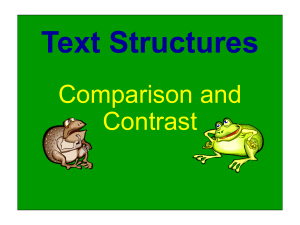
Opinion
TRENDS in Cognitive Sciences
Vol.7 No.4 April 2003
157
Chimpanzee minds: suspiciously human?
Daniel J. Povinelli and Jennifer Vonk
Cognitive Evolution Group University of Louisiana at Lafayette, 4401 W. Admiral Doyle Drive, New Iberia, Louisiana 70560, USA
Chimpanzees undoubtedly form concepts related to the
statistical regularities in behavior. But do they also construe such abstractions in terms of mental states – that
is, do they possess a ‘theory of mind’? Although both
anecdotal and experimental data have been marshaled
to support this idea, we show that no explanatory
power or economy of expression is gained by such an
assumption. We suggest that additional experiments
will be unhelpful as long as they continue to rely upon
determining whether subjects interpret behavioral
invariances in terms of mental states. We propose a
paradigm shift to overcome this limitation.
Why do the minds of chimpanzees seem so human-like? We
consider two answers; one of which has something
profound to say about their minds, and another, which
has something profound to say about our own. (In this
article, we restrict our comments to chimpanzees, including both Pan troglodytes and P. paniscus, but the reader
will apprehend that, in most cases, our remarks generalize
beyond comparisons of humans and chimpanzees. Structurally similar problems face researchers who compare
humans to other taxa, or who compare developmental
transitions in infants and children.)
Mental similarity: real or apparent?
The first possibility is that the chimpanzee’s mind seems
similar to ours precisely because it is similar. Biological
parsimony would seem to support such an assumption:
chimpanzees and humans arose from a common ancestor
about six million years ago. Alas, invoking biological
parsimony will not help. After all, humans and chimpanzees are different in several other important ways, but this
in no way denies their evolutionary relatedness. By way of
analogy, the fact that some bats echolocate but their closest
living relatives do not, hardly constitutes a crisis for
evolutionary theory [1,2].
A second possibility exists, however: the human mind
may have evolved a unique mental system that cannot
help distorting the chimpanzee’s mind, obligatorily
recreating it in its own image. This idea should be taken
seriously. After all, from change-blindness, to false
memories, to cognitive dissonance, don’t we already
know the various ways in which the human mind
systematically distorts its own workings?
It is worth noting that of the two lineages, the
human one has undergone dramatic evolution since its
divergence from the common ancestor. From head to
toe, the human body is stamped with the legacy of
Corresponding author: Daniel J. Povinelli (ceg@louisiana.edu).
those changes – changes that dwarf modifications that
occurred in the chimpanzee lineage. Humans have resculpted the pelvis for bipedalism, evolved unique muscles
in the hands for precision gripping, lost an opposable toe,
tripled the size of the brain [3,4], and evolved the most
complex system of communication that the planet has ever
seen – natural language. Would it be any wonder, then, to
discover that our minds also changed?
To gain some appreciation of the scope of evolutionary
diversification that went on in the human lineage
compared with the great apes, conduct the following
thought experiment. Line up all the living representatives
of the great ape/human clade, and then throw in the
common ancestor. One of these six is immediately
perceived as being not like the others. And that’s not
just from the human vantage point. As Alan Wilson and
colleagues showed several decades ago [5], a frog would
probably notice the differences as well.
Thinking about mental states
Let us examine these issues in the context of one of the
most hotly-contested questions under comparative investigation: is the ability to conceive of the mental world a
peculiarly human ability, or is it shared by other species,
including, perhaps, chimpanzees?
To begin, chimpanzees (like humans), probably form
abstract representations of the behavior of others. Each
instance of another chimpanzee pursing his lips, hair
bristling, need not be separately represented and understood. Rather, a concept of ‘threat display’ can be formed.
Further, having witnessed a ‘threat display,’ the chimpanzee probably has a good sense of the sorts of things that will
follow (‘charging’, ‘being hit’, etc.). This ‘behavioral
abstraction hypothesis’ posits that chimpanzees: (a)
construct abstract categories of behavior, (b) make predictions about future behaviors that follow from past
behaviors, and (c) adjust their own behavior accordingly.
The question of theory of mind, then, becomes an
additional, and quite focused one: do chimpanzees
construe behavior in terms of mental states? Is the concept
of ‘gaze’, for example, represented in both a behavioral
code (abstracted spatio-temporal invariances) and a nonbehavioral code (an attributed experience of ‘seeing’)?
Although the former may well do much, if not most, of the
actual work in supporting our behavioral interactions with
others (and hence ought to be a greater focal point for
research), if the latter is not present, then we have no
business invoking the phrase ‘theory of mind’ [6].
Most scholars agree that despite cultural diversity, the
core ability to think about mental states is a universal
feature of the human mind [7]. Crucially, however,
http://tics.trends.com 1364-6613/03/$ - see front matter q 2003 Elsevier Science Ltd. All rights reserved. doi:10.1016/S1364-6613(03)00053-6
158
Opinion
TRENDS in Cognitive Sciences
humans attribute more than just the mere existence of
mental states such as thinking, knowing, wanting, and so
forth (first-order mental states) to other beings. We also
attribute to them the same ability to attribute these mental
states to themselves and others (second-order mental
states). That is, our folk psychology interprets certain
behaviors as prima facie evidence that other individuals
possess a theory of mind. This is why most researchers – and
the public – are comfortable with a default hypothesis
granting chimpanzees, and other animals, a theory of mind:
they exhibit precisely those behaviors that our folk
psychology is designed to interpret in that way.
The reinterpretation hypothesis
At this point, some readers may be scratching their heads:
‘Okay, you think that humans automatically interpret
certain behaviors as evidence of theory of mind, and you
agree that this process works reasonably well when the
agents are other humans. So why shouldn’t it work equally
well with chimpanzees?’
The answer is simple: ‘Because we can easily imagine
that theory of mind uniquely evolved in humans!’ Humans
and chimpanzees undoubtedly inherited common mental
structures for forming behavioral abstractions. During the
course of hominid evolution, however, our lineage might
have woven a new, ‘theory-of-mind system’ into our ancestral
cognitive architecture in such a way that the new and old
systems now exist in perfect harmony alongside each other
– just as the numerous systems sub-serving echolocation
in bats were woven in alongside mental systems that they
share with their closest relatives.
We have labeled this the ‘reinterpretation hypothesis’ to
emphasize that in this scenario, the capacity for behavioral
abstraction was already present in the common ancestor,
and that humans added another system for coding the
behaviors in an additional, mentalistic fashion [8,9].
Consider the full force of this idea. If second-order
mental states evolved in this manner, it would mean by
definition that humans and chimpanzees must each
represent, reason about, and ultimately produce, a very
similar set of behaviors – but behaviors that humans
additionally explain in terms of mental states. The fact
that humans interpret certain constellations of behavior
as evidence of theory of mind would thus be a trivial
byproduct of the fact that theory of mind evolved by
exploiting the existing systems for behavioral abstraction.
Further, it would virtually guarantee the hegemony of the
human theory of mind: there is no way that the human
mind could avoid misconstruing the chimpanzee’s mind.
Now, let us examine what implications the ‘reinterpretation hypothesis’ has for the evidence – both anecdotal
and experimental – that has been marshaled to support
the idea that chimpanzees possess a theory of mind.
Deceived into believing: what’s really wrong with
anecdotes
The most widely celebrated evidence for second-order
mental states in chimpanzees is their ability to manipulate
each other [10–12]. The complexity of at least certain
instances of chimpanzee ‘deception’ has frequently tempted
the conclusion that the most plausible interpretation is
http://tics.trends.com
Vol.7 No.4 April 2003
that they are reasoning about what each other see, want,
know and believe [12,13]. Other writers have balked,
however, noting that it is trivial to imagine how organisms
could produce deceptive behaviors without reasoning
about mental states [14 – 16].
Because of this stalemate, the anecdotal approach has
gradually fallen out of favor, giving way to a predominantly
experimental approach. Unfortunately though, because the
most fundamental problem associated with the use of
anecdotes was never widely identified, the same conceptual
problem has crept, almost unnoticed, into our experiments.
Let us therefore briefly examine the spontaneous, nonexperimentally-derived behaviors of chimpanzees, and
determine what they can and cannot tell us – and why.
Consider any anecdote about deception by a chimpanzee. Question: ‘What does the deceptive chimpanzee
want?’ Answer: ‘To get another chimpanzee to behave in
a certain way’ (to move away from a piece of food, to turn in
a particular direction, to not approach, etc.). And so, the
deceiver does something to bring about this behavior: he
turns in a particular direction or walks away, positions
himself behind some obstruction, and so on. Thus, on any
account of the chimpanzee’s mind, the deceiver knows how
his or her own behavior will affect the behavior of others.
From here, we are typically drawn into a debate
over which of two accounts is more parsimonious
[10,13 – 15,17,18]. One side is cast as the skeptic:
‘Humans sometimes manipulate others by manipulating
their mental states, but chimpanzees do it by learning all
sorts of individual stimulus – response chains.’
The other side is cast as the naive believer: ‘Yes, it’s
obvious that chimpanzees and humans could be doing it
different ways, but it’s more biologically plausible to
assume that they’re doing it the same way. Further, it’s
more parsimonious (economical) to posit that chimpanzees
are reasoning about mental states than to suppose that
they are representing individual links between particular
behaviors and responses. Thus, for the same reasons that
we ultimately rejected behaviorism, we should reject the
skeptic’s assertion.’
The skeptic is wrong to suggest that the only alternative
to attributing a theory of mind is to accept the tenets of
behaviorism (i.e. positing that the chimpanzee has no
mental representations), but the believer’s invocation of
parsimony (economy of expression) constitutes an error in
logic: for each anecdotal instance of deception in which a
chimpanzee might have been reasoning about the mental
states of others, the agent must also have possessed a
corresponding behavioral abstraction that could have done
the same work.
Thus, unless the behavioral-abstraction hypothesis is
rejected, those who believe that deceptive chimpanzees
possess a theory of mind must postulate two things: first,
that they possess behavioral abstractions, and second, that
they possess representations of mental states! Here the lack
of analogy with the behaviorism debate becomes apparent:
everyone agrees that the chimpanzee’s mind contains
mental representations – that is, intervening variables.
The question is: are these intervening variables representations of behavioral abstractions and mental states (as
theoretical entities), or behavioral abstractions alone?
Opinion
TRENDS in Cognitive Sciences
Importantly, we are not denying the possibility of
constructing an imaginary dataset in which an economy
of expression can be gained by postulating second-order
mental states as intervening variables (e.g. see [18].
Rather, we contend that for the total corpus of chimpanzee
behavioral data to be explained, positing that chimpanzees
possess intervening variables that are behavioral abstractions will suffice. Consider instances of ‘partially hiding
from view’, a form of deception that Whiten and Byrne
thought might ‘rule out the use of…first-order representations’ (Ref. [19] pp. 215– 216). For example, a subordinate male chimpanzee conceals his erect penis (which
signals his intention to mate) with his hand, while
monitoring the dominant male who remains present.
But is the agent representing both the dominant’s
behavior (turning away) and his mental state (seeing/not
seeing), or just his behavior – and how would we know
given that reasoning about the mental state presupposes
reasoning about the behavior? Further, because each
anecdotal instance of deception assumes the presence of
behavioral abstractions, we lose economy of expression by
also assuming the presence of second-order mental states.
Thus, the real problem with the anecdotes is not that it is
unparsimonious to account for chimpanzee deception by
appealing to associative learning models (i.e. that the
behaviors were ‘shaped’, ‘reinforced’, or otherwise ‘learned’).
Instead, the problem is that each anecdote presupposes a
behavioral abstraction on the basis of which a mental state is
inferred, without specifying what unique causal work the
second-order mental state performs. Put simply: anecdotes
cannot resolve whether the intervening variable is an
invariant category of behavior coupled with an inference
about a mental state, or a behavioral invariant alone.
Spinning our experimental wheels?
It directly follows that any experiments that rely upon a
behavioral abstraction will be of little use, especially when
this invariant is one the subject has previously witnessed,
or that they are likely to have evolved to detect and exploit.
Indeed, contrary to recent speculations [20], behavioral
interactions that make the most ecological sense to the
organism are precisely the ones that will be least
diagnostic of whether the organism is reasoning about
mental states and behavior, or behavior alone [21]. After
all, these are the contexts for which evolution is most likely
to have sculpted special-purpose, highly-focused behavioral representations for use by the organism.
Consider recent experiments by Hare, Call and
Tomasello [22], (and see [23], this issue) who have tried
to use the context of food competition to determine whether
chimpanzees understand the connection between ‘seeing’
and ‘knowing’. A subordinate and dominant were
positioned on either side of an empty room from each
other, temporarily prevented from entering by doors which
could be opened: either slightly, to let them look into the
room, or all the way, to let them enter. An experimenter
placed food into one of two cups between them. The
subordinate’s door was opened first, giving him or her a
head start. When the subordinate, but not the dominant, was
allowed to observe the baiting, the subordinate frequently
approached the food; when both the subordinate and
http://tics.trends.com
Vol.7 No.4 April 2003
159
dominant observed the food being hidden, the subordinate
was less likely to approach the food (but see [24]).
Does this establish that the subordinate understands
the connection between seeing and knowing? Unfortunately not, because a behavioral abstraction serves as the
basis for a theory-of-mind coding: ‘Don’t go after the food if
that dominant has oriented towards it , because he has
seen it, and therefore knows where it is . .’
A ‘control’ condition was also implemented in which
both the subordinate and dominant watched the baiting,
but the location of the food was then switched. On half the
trials, the subordinate alone observed this switch; on the
other half, both observed. The subordinates were more
likely to search when only they saw the move (as opposed
to when the dominant saw the move as well). But again,
the conflation of behavioral abstraction and mental-state
attribution is obvious: ‘He was present and facing the food
when it was placed where it is now , so he saw the food
placed and currently knows where it is . therefore he is
likely to go after it’; and ‘He was not present when the food
was placed where it is now , so he didn’t see, therefore he
doesn’t know… . therefore he is less likely to go after it.’
Can additional ‘controls’ help? Hare et al. [22] used a
similar setup in which one dominant (Joe) watched the
baiting of food, but then when the door opened it was a
different dominant – Mary. The authors’ own theory of
mind interpreted their experiment as follows: if the
subordinate is more willing to approach the food when
the new dominant is present, they must be reasoning,
‘Well, Joe saw the food placed so he knows where it is…But
look, it’s Mary! She didn’t see the food being placed,
therefore she doesn’t know…’ But, of course, that ignores
that an intelligent chimpanzee could simply use the
behavioral abstraction (upon which the additional theory-of-mind coding depends): ‘Joe was present and
oriented; he will probably go after the food. Mary was
not present; she probably won’t.’
It is tempting to think that we can remedy these failings
of the current line of experiments by simply implementing
more or better controls. However, the problem is not the
ingenuity of the experimenters; it is the nature of the
experiments. Techniques that pivot upon behavioral
invariants (looking, gazing, threatening, peering out the
corner of the eye, accidentally spilling juice versus
intentionally pouring it out), will always presuppose that
the chimpanzee (or other agent) has access to the
invariant, thus crippling any attempt to establish whether
a mentalistic coding is also used. The sobering point is that
no experiment in which the theory-of-mind coding derives
from a behavioral abstraction will suffice. Control will
chase control with no end in sight, leaving only our
intuitions, hopelessly contaminated by our folk psychology, to settle the matter.
A conceptual solution: experiential mapping from self to
other
Drawing on isolated research trends, we propose a shift to
paradigms that develop and deploy techniques requiring
subjects to make an extrapolation from their own experiences
to the mental states of others. Subjects must be given an
experience that they could not otherwise have predicted from
160
Opinion
TRENDS in Cognitive Sciences
the environment, and then researchers must determine
whether they understand the nature of that experience.
The notion that ‘theory of mind’ involves, at its
foundation, using one’s own experiences to model the
experiences of others is not new; it forms the basis of
certain simulationist accounts of knowledge of other minds
(e.g. [25– 27]). Gallup was an early advocate of this general
approach for assaying the presence of theory of mind in
other species [21], and several studies have approximated
this design – some with chimpanzees (M.S. Novey,
unpublished doctoral dissertation, Harvard University,
1975), some with human infants and children
(J.A. Sommerville, unpublished doctoral dissertation,
University of Chicago, 2002). We propose that this
approach, with key strictures, become recognized as a
way of escaping the logical problems inherent in anecdotes
and the experimental approaches currently in vogue.
Let us consider an example. Povinelli and colleagues
[28,29] gave chimpanzees experiences with opaque buckets and blindfolds and cardboard screens, and then, in a
food-begging context, confronted them with two familiar
experimenters, one who could see them and one who could
not. For example, one choice was between someone with a
bucket over her head and someone holding a bucket on her
shoulder. Interestingly, they did not prefer to gesture to
the person who could see them, but even if they had, we
would face the same problem we isolated above: the
subjects certainly had ample opportunity to form abstractions about how others behave with their face or eyes
obstructed. Thus, merely providing the self-experience is
not sufficient. Two other conditions must be met: (1) the
cue on which the inference to the mental states is made
must be arbitrary, and (2) the subject must have no
exposure to others behaving in association with that cue.
Adapting a suggestion by Heyes [14], imagine that we
let a chimpanzee interact with two buckets, one red, one
blue. When the red one is placed over her head total
darkness is experienced; when the blue one is similarly
placed, she can still see. Now have her, for the first time,
confront others (in this case the experimenters) with these
buckets over their heads. If she selectively gestures to the
person wearing the blue bucket we could be highly
confident that the nature of her coding was, in part,
mentalistic – that is, that she represented the other as
‘seeing’ her. Our point is not to advocate a particularly
‘good’ or ‘clever’ test. Rather, the test exemplifies a class of
experiments that could in theory escape the problem of the
power of the behavioral abstraction system.
Although, first and foremost, we advocate this new
experimental program, there is another, more subtle
change that is needed for further progress: the idea that
theory of mind is the ‘holy grail’ of comparative cognition
needs to be abandoned. Neither chimpanzees nor evolutionary theory will be insulted if the very idea of ‘mental
states’ turns out to be an oddity of our species’ way of
understanding the social world.
Acknowledgements
We gratefully acknowledge that this work was supported by a James
S. McDonnell Centennial Award to D.J.P. We also thank Steve Giambrone
for thoughtful comments on some of the ideas in this article.
http://tics.trends.com
Vol.7 No.4 April 2003
References
1 Hutcheon, J.M. et al. (2002) A comparative analysis of brain size in
relation to foraging ecology and phylogeny in the Chiroptera. Brain
Behav. Evol. 60, 165 – 180
2 Legendre, P. and Lapointe, F.J. (1995) Matching behavioral evolution
to brain morphology. Brain Behav. Evol. 45, 110– 121
3 Aiello, L. and Dean, C. (1990) An Introduction to Human Evolutionary
Anatomy, Academic Press
4 Fleagle, J.G. (1999) Primate Adaptation and Evolution, Second
Edition, Academic Press
5 Cherry, L.M. et al. (1978) Frog perspective on the morphological
difference between humans and chimpanzees. Science 200, 209– 211
6 Premack, D. and Woodruff, G. (1978) Does the chimpanzee have a
theory of mind? Behav. Brain Sci. 1, 515– 526
7 Lillard, A. (1998) Ethnopsychologies: Cultural variations in theories of
mind. Psychol. Bull. 123, 3 – 33
8 Povinelli, D.J. and Giambrone, S. (1999) Inferring other minds: failure
of the argument by analogy. Philos. Topics 27, 167 – 201
9 Povinelli, D.J. and Giambrone, S. (2000) Escaping the argument by
analogy. In Folk Physics for Apes (Povinelli, D., ed.), pp. 9 – 72, Oxford
University Press
10 Whiten, A. and Byrne, R.W. (1988) Tactical deception in primates.
Behav. Brain Sci. 11, 233– 244
11 Byrne, R.W. and Whiten, A. (1992) Cognitive evolution in primates:
evidence from tactical deception. Man 27, 609 – 627
12 Whiten, A. (1997) The Machiavellian mindreader. In Machiavellian
Intelligence II: Extensions and Evaluations (Whiten, A. and Byrne,
R.W., eds) pp. 144 – 173, Cambridge University Press
13 de Waal, F.B.M. (1991) Complementary methods and convergent evidence in the study of primate social cognition. Behaviour 118, 297–320
14 Heyes, C.M. (1998) Theory of mind in nonhuman primates. Behav.
Brain Sci. 21, 101– 148
15 Kummer, H. et al. (1990) Exploring primate social cognition: some
critical remarks. Behaviour 112, 84 – 98
16 Premack, D. (1988) ‘Does the chimpanzee have a theory of mind?’
revisited. In Machiavellian Intelligence: Social Expertise and the
Evolution of Intellect in Monkeys, Apes and Humans (Whiten, A. and
Byrne, R.W., eds) pp. 160 – 179, Oxford University Press
17 Savage-Rumbaugh, S. and McDonald, K. (1988) Deception and social
manipulation in symbol-using apes. In Machiavellian Intelligence:
Social Expertise and the Evolution of Intellect in Monkeys, Apes and
Humans (Whiten, A. and Byrne, R.W., eds) pp. 225 – 237, Oxford
University Press
18 Whiten, A. (1994) Grades of mindreading. In Children’s Early
Understanding of Mind: Origins and Development (Lewis, C. and
Mitchell, P., eds) pp. 47– 70, Erlbaum
19 Whiten, A. and Byrne, R.W. (1988) Tactical deception of familiar
individuals in baboons. In Machiavellian Intelligence: Social Expertise
and the Evolution of Intellect in Monkeys, Apes and Humans (Whiten,
A. and Byrne, R.W., eds) pp. 205– 223, Oxford University Press
20 Hare, B. (2001) Can competitive paradigms increase the validity of
experiments on primate social cognition? Anim. Cogn. 4, 269– 280
21 Gallup, G. (1985) Do minds exist in species other than our own?
Neurosci. Biobehav. Rev. 9, 631 – 641
22 Hare, B. et al. (2001) Do chimpanzees know what conspecifics know?
Anim. Behav. 61, 139– 151
23 Tomasello, M. (2003) Chimpanzees understand psychological states:
the question is which ones and to what extent. Trends Cogn. Sci. 7,
153– 156
24 Karin-D’Arcy, R.M. and Povinelli, D.J. Do chimpanzees know what
each other see? a closer look. Int. J. Comp. Psychol. (in press)
25 Gordon, R. (1986) Folk psychology as simulation. Mind Lang. 1,
158– 171
26 Harris, P.L. (1991) The work of the imagination. In Natural Theories of
Mind: The Evolution, Development and Simulations of Everyday
Mindreading (Whiten, A., ed.), pp. 283 – 304, Blackwell
27 Goldman, A. (1993) The psychology of folk psychology. Behav. Brain
Sci. 16, 15 – 28
28 Povinelli, D.J. and Eddy, T. (1996) What Young Chimpanzees Know
About Seeing. Monographs of the Society for Research in Child
Development, 61, (Serial No. 247)
29 Reaux, J.E. et al. (1999) A longitudinal investigation of chimpanzees’
understanding of visual perception. Child Dev. 70, 275 – 290







